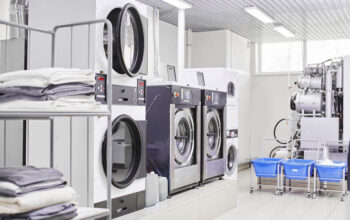Construction projects are essential for urban development but can often lead to dust and air pollution, impacting the environment and public health. Implementing effective dust control practices is crucial to improving air quality and mitigating the negative effects of construction activities.
Understanding the impact of dust
Construction sites are notorious for generating dust particles that can linger in the air for a long time. These particles, if inhaled, can pose serious health risks, especially for workers and individuals living close to the construction site. Understanding the impact of dust is crucial for maintaining a safe and efficient construction site. From respiratory issues to reduced visibility, dust can create numerous problems that must be addressed. Implementing proper dust control measures from providers like bosstek.com is essential to ensuring the well-being of workers and the successful completion of construction projects.
The importance of dust control measures
Implementing dust control measures not only benefits the environment and public health but also enhances the overall efficiency of the construction project. Dust control measures may not be the most glamorous topic, but they play a crucial role in our everyday lives. Dust particles can carry harmful substances such as allergens, pollutants, and even infectious agents. By reducing dust emissions and implementing control measures, construction sites can operate more smoothly, adhere to environmental regulations, and maintain a positive reputation within the community. Additionally, dust control measures can also prevent damage to equipment and machinery, improving their longevity and efficiency.
Best practices for dust control
Dust control is a crucial aspect of maintaining a clean and healthy environment. Whether it’s in a residential setting or an industrial facility, implementing best practices for dust control can greatly improve the air quality and overall cleanliness of a space. One effective strategy is to regularly clean and vacuum surfaces to prevent dust from accumulating. Additionally, using air purifiers and filters can help remove airborne particles and reduce dust levels. It’s also important to address any potential sources of dust, such as leaky ductwork or construction materials, and take appropriate measures to minimize their impact. By following these best practices, you can create a dust-free environment that promotes better health and well-being.
Effective dust control practices
Water sprinkling
Regularly spraying water on exposed surfaces can help suppress dust by weighing down particles and preventing them from becoming airborne. Water trucks or sprinkler systems can be used to ensure thorough coverage of the construction site.
Vegetation and windbreaks
Planting vegetation or installing windbreaks, such as fences or barriers, can help reduce the spread of dust by acting as natural filters. Trees, shrubs, and grass can trap dust particles and improve air quality around the construction site.
Dust suppressants
Applying dust suppressants or chemical stabilizers to dusty surfaces can effectively control dust emissions. These products work by binding dust particles together, preventing them from becoming airborne, and reducing overall dust levels.
Improving air quality on construction sites through effective dust control practices is not only a regulatory requirement but also a responsibility towards the environment and public health. By implementing measures such as water sprinkling, vegetation barriers, and dust suppressants, construction projects can minimize their impact on air quality and create a safer and healthier environment for workers.




